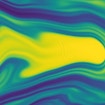Enormous ‘Ghost’ Galaxy Spotted on Outskirts of Milky Way

Astronomers have discovered a ghostlike galaxy that looms large on the fringes of the Milky Way.
The newly discovered dwarf galaxy, dubbed Antlia 2, stretches roughly 19,000 light-years across. That makes it the vastest satellite galaxy of the Milky Way. Despite its enormous extent, though, Antlia 2 is incredibly faint and barren: It is by far the sparsest galaxy ever seen in the universe, its discoverers report in a paper posted November 13 at arXiv.org.
“It’s a fuzzy, ghostly glob of light,” says astrophysicist and co-discoverer Vasily Belokurov of the University of Cambridge and the Center for Computational Astrophysics at the Flatiron Institute in New York City. “When we discovered it, everyone was shocked at how diffuse this thing is.”
The galaxy’s discovery offers insights into the nature of dark matter and opens the door for the detection of more ‘stealth’ galaxies that emit relatively little light, says co-discoverer Gabriel Torrealba of Academia Sinica in Taiwan. “This might be just the tip of the iceberg,” he says.
Around 60 known galaxies buzz around the Milky Way, and astronomers believe that even more remain undiscovered.
Recently, dwarf-galaxy hunters gained a new tool for finding undiscovered Milky Way satellites: the European Space Agency’s Gaia spacecraft. The powerful satellite scans the sky looking at the positions and motions of 1.7 billion stars. Data provided by Gaia made Antlia 2’s discovery possible.
On April 25, the Gaia team released a second, fresh batch of data. At a weeklong ‘hackathon’ hosted by the Center for Computational Astrophysics several weeks later, Torrealba, Belokurov and colleagues combed the Gaia dataset for unseen galaxies.
The researchers focused their search on a class of stars called RR Lyrae variables. These stars are easily identifiable and are found in nearly every known satellite of the Milky Way. In the Gaia data, the researchers found a bundle of three RR Lyrae stars in a region around 400,000 light-years away where no known galaxies existed. “Without Gaia, this galaxy is virtually invisible and hence impossible to find,” Torrealba says.
The region was obscured from view by the Milky Way’s galactic disk, in the so-called ‘Zone of Avoidance.’ Thanks to Gaia’s precise measurements of the Milky Way, the researchers could filter out nearby stars to get a clearer view of the newfound galaxy. Observations by the Anglo-Australian Telescope at the Siding Spring Observatory in Australia confirmed the finding. It’s the second dwarf galaxy found in the Antlia constellation, earning it the nickname Antlia 2.
Antlia 2 has the widest diameter of the Milky Way’s known satellites. However, it is also the sparsest galaxy ever seen. It’s roughly 100 times as diffuse as so-called ultra-diffuse galaxies. The similar-sized Large Magellanic Cloud dwarf galaxy, for comparison, contains approximately 7,500 times as much stellar mass. Antlia 2’s relative emptiness gives it a surface brightness that’s far lower than that of any other known galaxy.
Why Antlia 2 is so spread out remains unknown. The galaxy has the sparsest dark matter halo ever detected. Stellar winds and supernova explosions may have launched material out of the galaxy, weakening Antlia 2’s gravitational pull and allowing dark matter to drift outward. Alternatively, the galaxy’s dark matter may be spread out and fluffy, suggesting that dark matter is less prone to clumping than some proposals suggest.
“It’s either telling us about the properties of dark matter, or about the dark matter in this particular galaxy, but there is something afoot there,” says Belokurov. The discovery of more ghostly galaxies will offer astronomers additional clues, he says. “We’re tapping into this new regime where there are possibly many very faint galaxies, like this one, that await discovery.”
Torrealba and Belokurov worked on the project alongside Walter Dehnen of the University of Leicester; Wyn Evans and Jason Sanders of the University of Cambridge; Alex Geringer-Sameth of Imperial College London; Sergey Koposov and Matthew Walker of Carnegie Mellon University in Pittsburgh; Kyler Kuehn and Daniel Zucker of Macquarie University in Sydney; and Ting Li of the Fermi National Accelerator Laboratory in Batavia, Illinois.
For more information, please contact [email protected].


